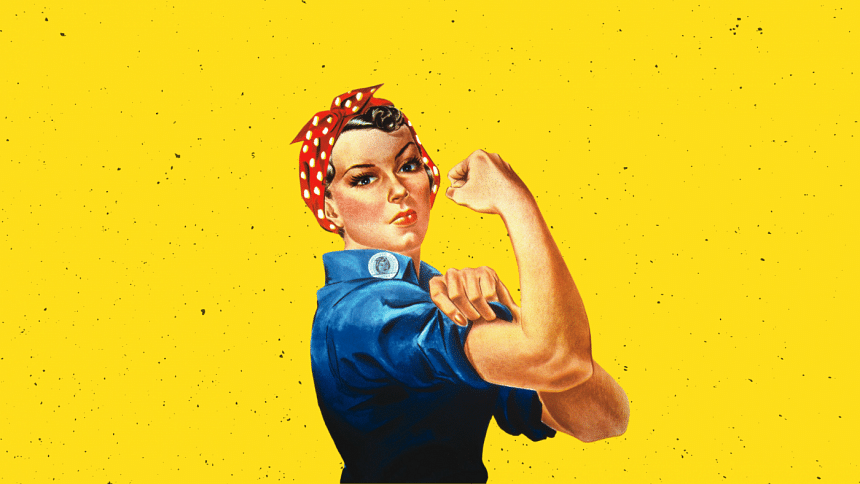Breaking gender stereotypes in the workplace

It's no secret that women are under-represented in high-paying jobs in management. While numbers vary across industries, a recent survey in the financial services sector found that while women represented 58% of human resources, 46% of marketing, and 35% of legal executive roles, they held only 13% of technology, 17% of finance and 21% of operations executive roles. Unfortunately, gender pay gaps arise because the management occupations with fewer women typically pay more.
Nusrat Jahan, currently working at a national bank expressed, "When I first joined the institution, my opinions were disregarded. Most employees would laugh at how I wouldn't even last the month. Now that it's been more than 2 years since I've worked here, people have started to respect me more but is that enough?" How does the gender imbalance across occupations happen and can it be corrected?
Stereotypes
Gender segregation of jobs is so high that roughly one half of the entire workforce would need to migrate across gender lines (men moving to female-dominated jobs and women moving to male-dominated jobs) to achieve gender equality in occupations. Statistically, there are jobs that are predominantly held by men, and others that are predominantly held by women. To a lesser extent, this gender segregation characterizes whole industries—for example, manufacturing and law enforcement are filled with mostly men; education and health care are comprised of mostly women.
Trendy nomenclature categorizing female-dominated jobs and industries as "pink collar work" only serves to more deeply entrench this unnecessary divide. Dividing the sexes (with assumptions about inherent strengths and weaknesses) and the labor market makes it easy to further devalue, rather than celebrate, that which is feminine.
Schools
Why confront gender bias in the classroom as early as possible? A survey involving over 2,000 children ages 4 to 16 found that from an early age, children make assumptions that confirm gender stereotypes. Children learn how to think about themselves and others from the messages they hear in society. And often, these messages include stereotypes about gender that stick with them for the rest of their lives.
In the classroom, students often encounter implicit or explicit assumptions about gender. For example, girls interested in STEM subjects may be discouraged if others say such topics aren't very "feminine" pursuits. And the prevalence of this stereotype may be linked to the fact that more than 50% of all women in STEM ultimately leave their field due to hostile work environments. We can make a difference for younger students by teaching them to find strength in their gender identity and to treat kindly those with different identities than their own.
Universities
Universities have long intuited that representation can help combat student self-doubt by providing a successful counterexample to the stereotype. By specifically employing more female instructors who can teach quantitative courses, universities can make significant cracks in the glass ceiling. However, that female faculty themselves are subject to bias in teaching evaluations, especially in quant courses, because of the very stereotypes that they help fight. As such, business schools not only need to have policies in place to help female students but also to help female faculty. Besides hiring more female faculty, gender stereotypes may also be countered by taking active steps to have more female speakers, alumni events, student leaders, club presidents and teaching assistants.
Elevating the quantitative performance of women in universities can help increase the representation of talented women in finance, consulting, consumer technology, which are also typically more lucrative. In addition, recruiters can hire and retain a more diverse workforce — and stop lamenting the lack of women. This will also result in more gender-healthy pipelines for senior management positions.
Breaking the Stereotype
Just as when women were pulled into previously male-dominated organizations during World War II because there was work to be done and fewer men to do it, demographic and technological trends are creating similar forces, pulling men and women to cross traditional gender lines.
Women are being encouraged to enter STEM fields and the military, while men have opportunities in education and health care. However, although demographic workforce shifts are occurring, entrenched social roles and stereotypes are slower to evolve.
Workplace training should address things like language and word choice. Understanding the implications of our words can be powerful. Training can help managers and organizational leaders to be more cognizant of how their word choice for performance evaluations, feedback and job postings can unintentionally create gender bias. Our word choice and language have spillover effects that impact so many different aspects of our lives. Awareness is the key. Recognizing the consequences of our gendered language can be the catalyst that sparks change.

 For all latest news, follow The Daily Star's Google News channel.
For all latest news, follow The Daily Star's Google News channel. 



Comments